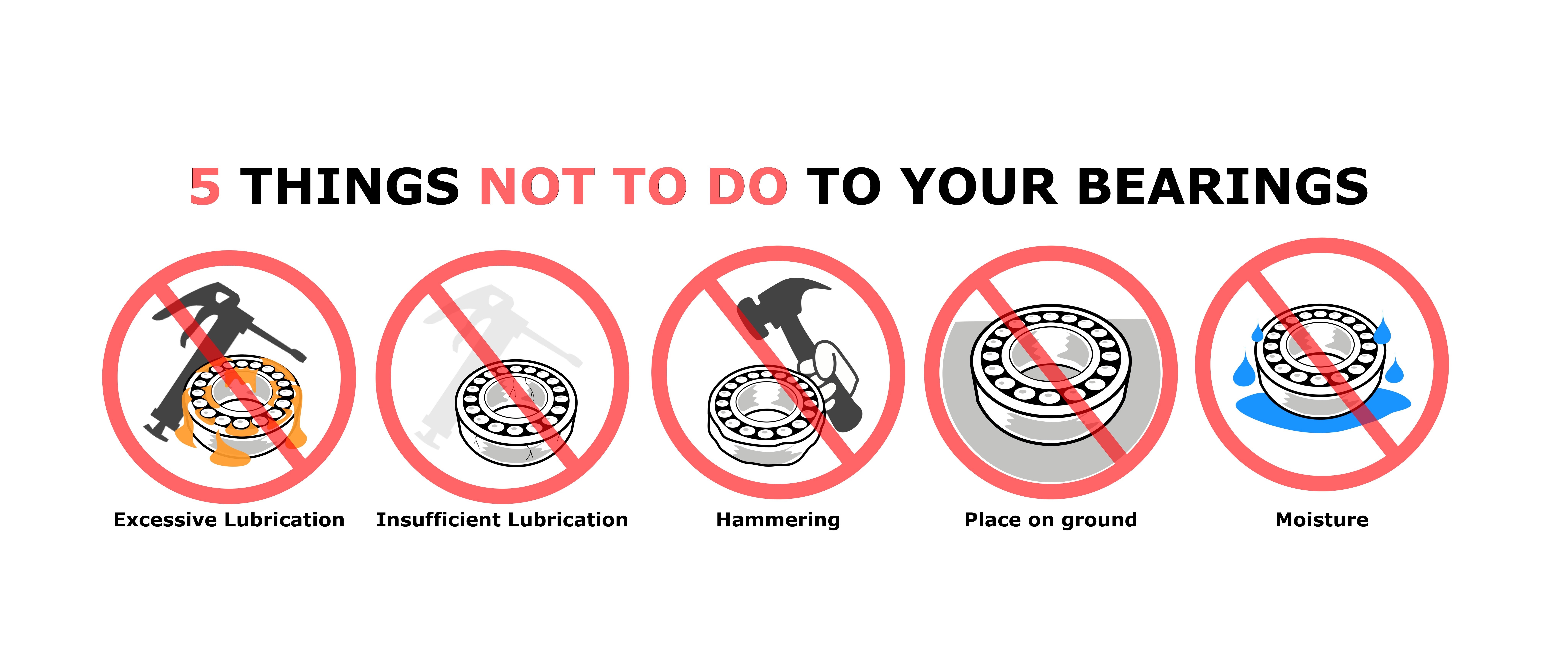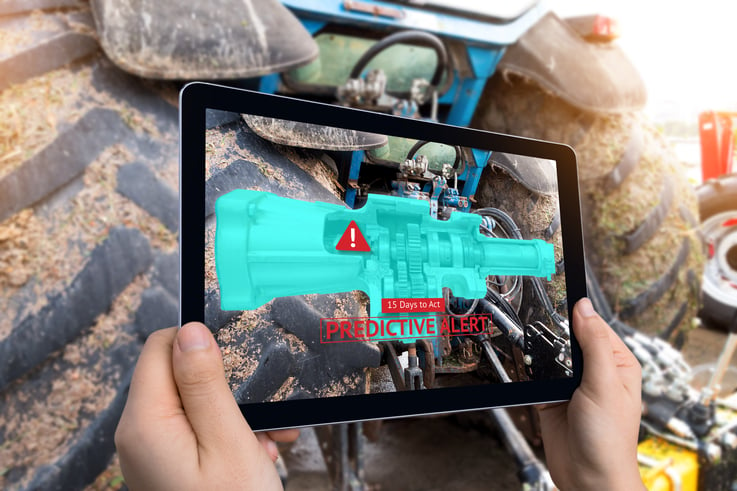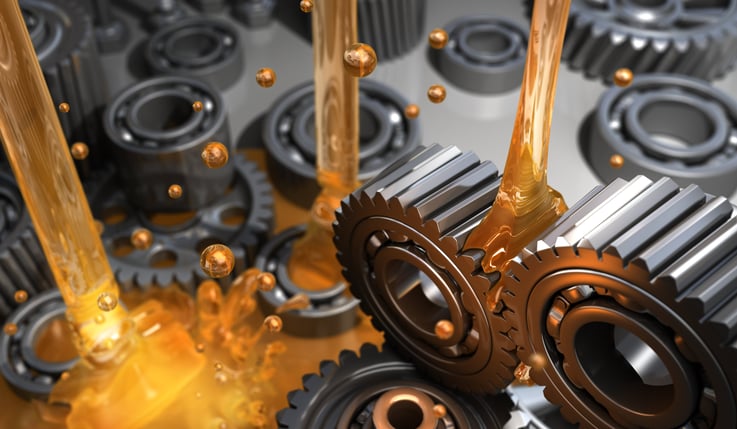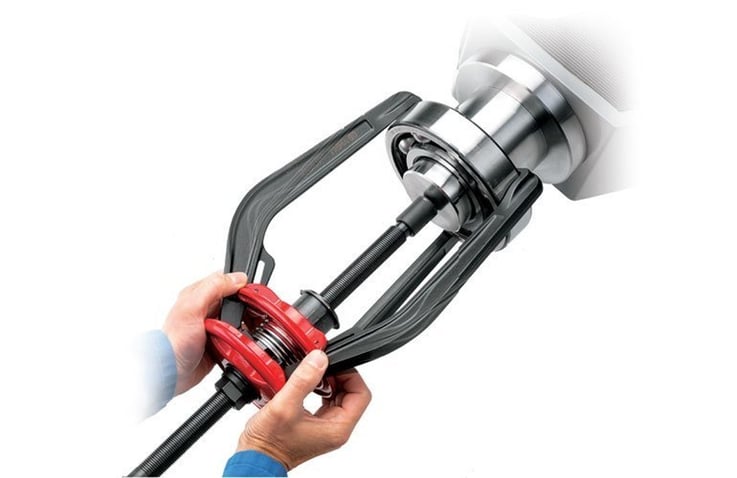Taking care of your bearings in a proper manner is an important process to increase their lifespan and enhance bearings performance. Often times when bearings are mishandled, it will lead to premature failure.
These are a few things that you should not do to your bearings to avoid early breakdowns:
1. Applying too little grease
Applying lower than the recommended amount of grease may increase temperatures and metal contact, leading to increased friction and damaging the bearing through extreme wear. As a result, it leads to early failure in your bearings.
2. Applying too much grease
In fact, over-greasing causes even more damage to the bearings than under-greasing. Applying too much grease will lead to heat-build up as there is nowhere for heat to dissipate and along with the internal churning of the bearing, the excessive grease will then travel outside the bearing and hardened on the surface, preventing the entry of any other grease. The restricted lubricant flow and high temperature then results in lubrication failure and in turn, bearing failure.
3. Placing your bearings on the ground
Avoid placing your bearings on the floor for long hours even if they are new and tightly sealed in a package. This is due to the direct contact between the ground and the bearings and thus heat transfers quickly from the floor to the bearings. Furthermore, the ground surface is also exposed to moisture that could seep into the packaging of the bearings and eventually to the bearing itself.
Therefore, it is strongly recommended that whenever you receive your bearings, place them on high surfaced objects such as a wooden palette that acts as an insulator without any direct contact between the ground and bearings so that heat transfer is slow; the same goes for moisture.
4. Hammer or exert direct force
While bearings are relatively hard, using metal hammers (e.g. steel) that have greater hardness could cause serious harm to the bearings.
Usually, the tight fit configuration is meant for either the shaft or the housing. There have been cases whereby both components have tight fits due to their deviation which dictates how far away from the nominal dimension, the actual measurement is allowed to be. For example, if the shaft has the maximum deviation of +10μm and housing bore has the minimum deviation of -10μm, this would mean that the shaft has a slightly larger diameter than its standard measurement while the housing has a marginally smaller diameter than its actual dimension. Hence, the larger shaft and the smaller housing are unable to fit into each other due to tightness.
When encountered with this situation, some would use a hammer or similar tools to pound on the bearings, hoping to "loosen" the fit. However, not only does this action unable to help with loosening the fit, it causes severe damage to the bearings. This causes the rolling elements to be misaligned and also wears out the bearings due to hammering.
5. Exposing your bearings to moisture
While most bearings have a strong resistant to water or damp surfaces, it is still susceptible to rust under extreme condition or when they are exposed to moisture for a long period of time, resulting in water contamination. It is important to note that even a little rust has a huge impact on the lifespan of the bearings. While bearing failure may take a long time, sometimes even up to several years to even be noticeable, the life expectancy of bearings are significantly reduced. Therefore, it is important to keep your bearings sealed in their original unopened package (until needed) and stored in a clean and dry environment.
Download our Free Bearings Maintenance Guide here
At SLS, we care about your bearings and our friendly sales engineers are able to help you to implement best practices for bearings maintenance or inspection to optimize performance. You could contact us here or book a consultation by clicking the button below.








